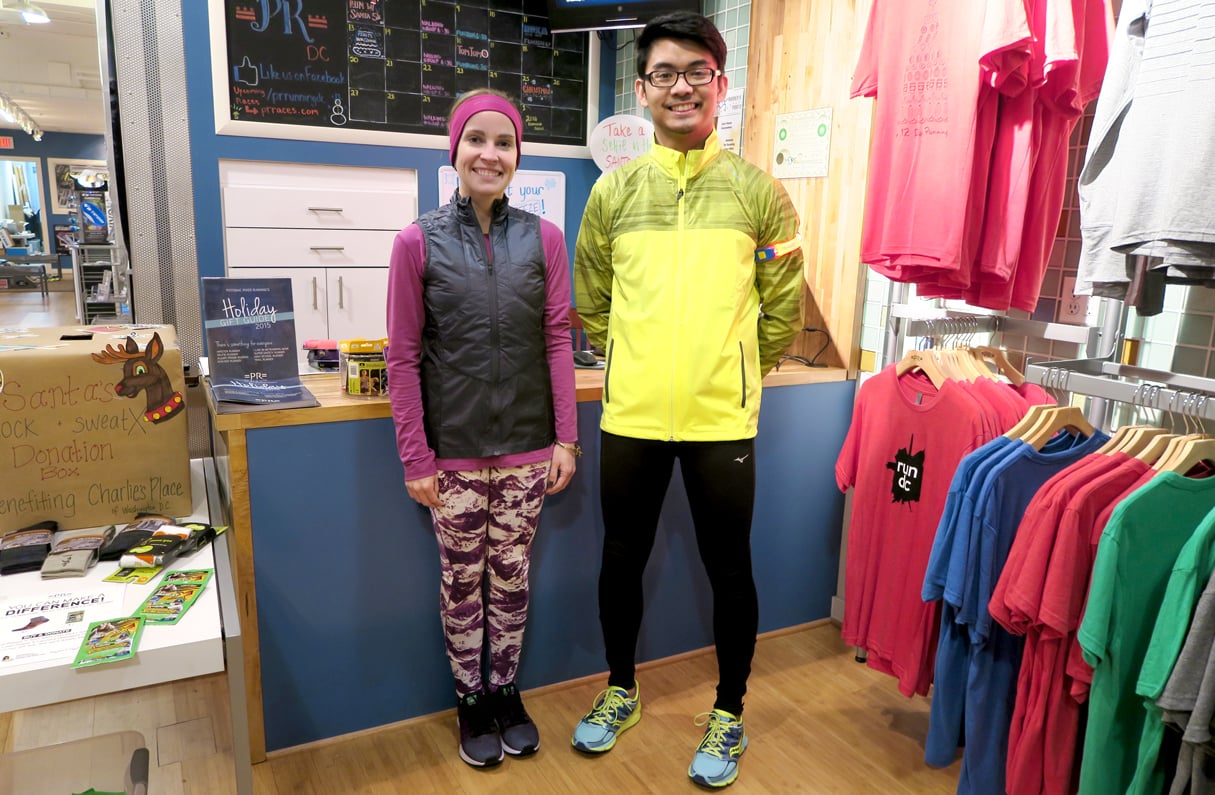The winter season is upon us, and with even colder months ahead, you need to be thinking about your winter running gear. Avoid the awkward gym-goers and brace for the snow with these seven tips for running outside from Potomac River Running store manager Ashley Kraus.
1. Dress like it’s 20 degrees warmer.
Take into account wind-chill and the “feels like” temperature before you start your run. “Once you start moving, you just heat up,” says Kraus. Layering is key for the constant change in temperature, but in the DC area, Kraus says, you don’t need to layer unless it’s under 10 degrees out.
2. Avoid cotton.
“All you have to do for your core for winter running is a dry-fit or wicking material. Anything that is not cotton,” Kraus says. Sweat-wicking materials pull the sweat away from your body so when an icy breeze or cold temps come bustling through, it doesn’t feel like you’re being doused in cold water, unlike cotton which holds moisture against your skin. Opt for nylons, polyester, and Merino wool instead.
3. Water resistant, not waterproof.
A vest or shell is a great lightweight option for extra insulation, but read the labeling. “You don’t want anything 100 percent waterproof because you will bake inside of it,” says Kraus. Waterproof clothes keep rain out but heat in, and you’ll feel sweat pouring down your sleeves—not ideal for the cold.
4. Always make yourself visible.
“You need to make sure you have a visibility product,” says Kraus. On dark, high-traffic DC streets, it’s a great idea to wear a vest, a headlamp, or a strobe light.
5. Consider your footwear.
Kraus recommends Merino wool socks for wicking away sweat and repelling water. “They also come up higher for the skin portion between your shoe and pants,” she says. Take a look at your sneakers, too. Some styles offer a water-repellant layer—usually called a “shield” or “flash”—that keeps rain and snow from infiltrating. For snowy trails or unshoveled sidewalks, consider ice trekkers—chains that wrap around your shoes for extra traction.
6. Don’t forget your extremities.
“I really like a mitt, which keeps your fingers close together to keep them warm,” says Kraus, but gloves, hats, and ear warmers are all good options if you tend to lose feeling in your extremities.
7. You don’t need to get fancy.
“If you’re not ready to invest in high-quality running gear, throw on your ugly, old college sweatshirt to keep in the heat,” says Kraus. The important part is that wicking base layer under your hoodie or sweatpants.
Above: Kraus sports New Balance Premium Performance Printed Running Tights ($85), Brooks Versa EZ long-sleeve ($50) and Brooks LSD Thermal Vest ($110), Swiftwick Pursuit Two socks ($18), Nike Pegasus Flash sneakers ($125), and Brooks headband ($30).
Rabor is wearing Mizuno Breath Thermo short-sleeve ($75) under his Brooks Drift Running Shell ($135), Mizuno Breath Thermo tights ($69.99), Feetures ultralight anatomical fit socks ($12), Saucony Zealot Iso sneakers ($120), Nathan Lightbender RX ($28), and Tomtom Multi-Sport Cardio watch ($190).


















